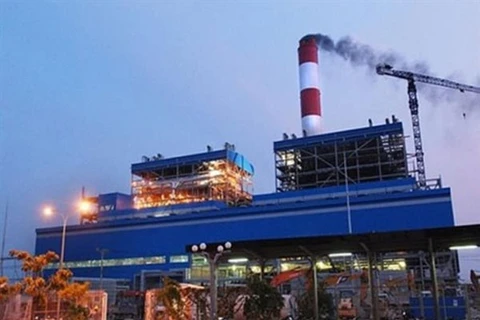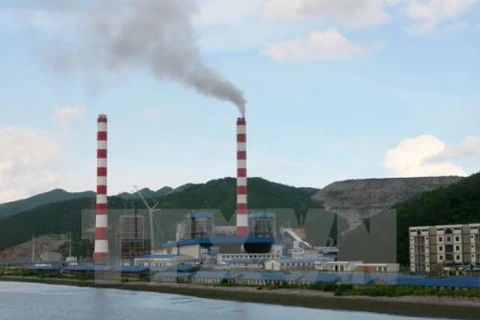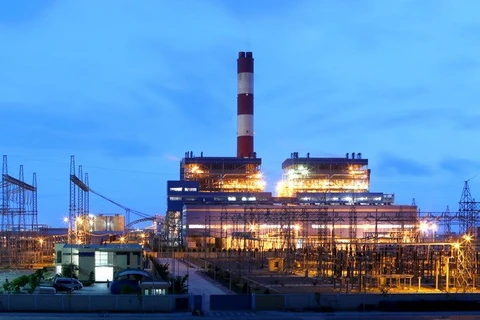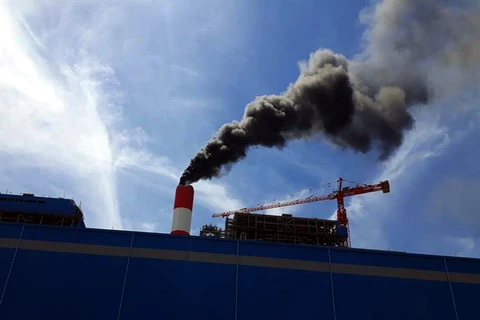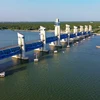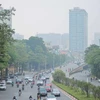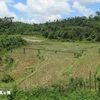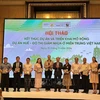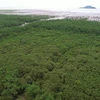 As Vietnam develops its thermal power plant system to meet increasing energy demands, the country faces a new environmental risk arising from the waste generated by those plants. (Photo: baohaiquan.vn)
As Vietnam develops its thermal power plant system to meet increasing energy demands, the country faces a new environmental risk arising from the waste generated by those plants. (Photo: baohaiquan.vn) Hanoi (VNA) – Coal ash inventory generated by Vietnam’ thermal power plants amounted to 25.2 million tonnes last year, while the number factories are still on the rise, raising an alarm of no more room for storage in the next few year.
According to the Department of Industrial Safety and Environment (DISE) under the Ministry of Industry and Trade, in 2017, thermal power plants generated up to 12.2 million tones of coal ash, while treating only 4 million tonnes.
The amended master plan for electricity development for 2011-2020 with a vision to 2030 says that 46 coal-fired power plants will be in operation by 2030 with a total designed capacity of 41,500 MW. So in the next few years, without any feasible solutions, the amount of ash could increase to the point that there is no room for storage.
DISE Deputy Director Pham Trong Thuc said the generation of thermoelectricity was one of the biggest sources of waste.
To produce 1kWh of electricity using coal dust, from 0.9 to 1.5kg of coal ash will be emitted. Thus, coal ash generated annually from the 23 operational thermal power plants measures about 12.2 million tonnes. The north of the country is home to 60 percent of the plants, while the central region has 21 percent and the south 19 percent.
Therefore, it was important to have an accurate assessment of the issue in order to develop a comprehensive and efficient policy for the management, transportation and disposal of coal ash from thermal power plants, Thuc said.
He added that although the Government and ministries encouraged the use of coal ash and boiler slag for the production of cement and other materials in construction, the amount of ash had increased rapidly because the production process faced obstacles and products were difficult to sell.
The first reason was that most people and construction enterprises are wary of the quality of unburnt brick made from coal ash.
Additionally, the country lacked technical regulations for the treatment and use of coal ash and boiler slag in construction, while many legal documents on management are not suitable. For example, at the Dong Trieu Thermo Power Plant in the northern province Quang Ninh, the average annual ash output of Mao Khe Thermal Power Plant is about 650,000 tonnes. However, only about 17 percent of the ash is used in the production of non-baked materials and as a cement additive.
Associate Professor Bach Dinh Thien, an expert from the Tropical Building Materials Research Institute said that if coal ash and boiler slag were treated well, Vietnam could annually save millions of tonnes of minerals, hundreds of hectares of storage areas and protect the environment from solid waste.
The Ministry of Construction has issued Circular 13 regulating the use of unbaked building materials, which took effect from the beginning of February this year.
Under the circular, state-funded enterprises in Hanoi and Ho Chi Minh City must use 100 per cent of unburnt building materials. Those in lowland, midland and south eastern areas must use at least 90 percent, and in the remaining areas at least 70 percent.
In March this year, Deputy Prime Minister Trinh Dinh Dung worked with concerned ministries to discuss solutions for processing coal ash and boiler slag, and resolve difficulties towards creating more favourable conditions in the management, use and consumption of ash and slag.-VNA
VNA
